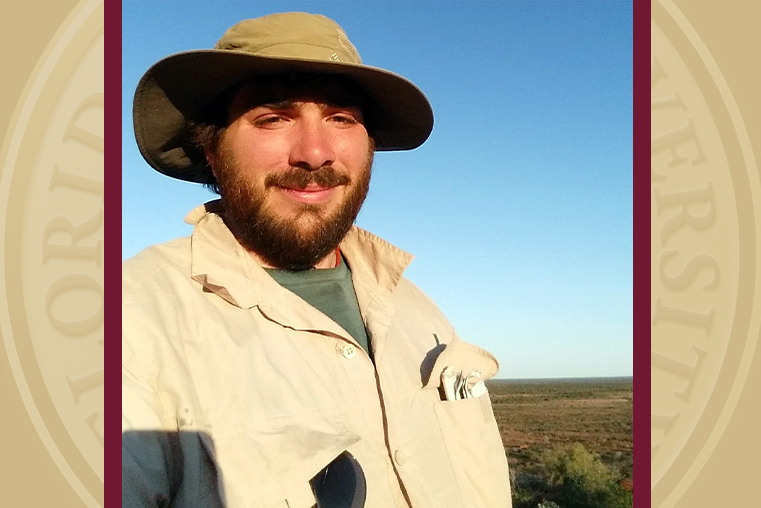
A Florida State University faculty member has been named a 2022 Division Outstanding Early Career Scientist by the European Geosciences Union (EGU).
Richard Bono, an assistant professor in the Department of Earth, Ocean and Atmospheric Science, received the award in the EGU’s Earth magnetism and rock physics division.
“Richard is a fantastic example of a scientist making great contributions to his field, and his research is made even more impressive because he is at the beginning of his career,” department Chair Bob Hart said. “Along with helping us understand our planet’s geological history, this work is especially relevant because of the ways technology interacts with the magnetic field in the present.”
Bono examines how Earth’s magnetic field has changed over very long timescales and what that tells us about the development of the planet’s core and its impact on habitability. His work has investigated when Earth’s magnetic field formed, how it has changed and how the strength of the magnetic field has varied over four billion years. He was the lead investigator on a landmark study that showed the influence of the magnetic field in single mineral grains, which allowed him to assert that the Earth’s inner core started solidifying about 600 million years ago, relatively recent on the planet’s time scale.
Extending thousands of miles into space, Earth’s magnetic field makes life as we know it possible by shielding solar wind and radiation that would otherwise strip away the atmosphere. Along with being crucial for the evolution of life, the magnetic field also shields satellites orbiting the planet that we rely on for communication, navigation, meteorology and more.
“Even though the planet’s core is thousands of miles beneath our feet, it has a critical influence on how we live,” Bono said.
The magnetic field is generated by liquid iron-nickel in the planet’s core. As that so-called geodynamo swirls around the core, the field moves as well. Scientists can understand its movement over time by observing the orientation of microscopic magnetic minerals inside rocks. Those magnetic minerals pointed toward whatever spot on the planet was magnetic north at the time of their formation.
That gives scientists insight into how tectonic plates that make up the Earth’s crust moved across the planet’s surface over millions of years.
“I thought that was the most fascinating puzzle someone could work on, trying to figure out how the plates fit together and moved from something like Pangea from when dinosaurs were living to the continents we have today,” Bono said. “Trying to put those puzzle pieces back together was the first thing that captured my interest, and paleomagnetism was a fundamental contribution to understanding that.”
EGU’s Outstanding Early Career Scientist Awards recognize young scientists making outstanding contributions to the study of Earth, planetary and space sciences. Awardees are role models for the next generation of geosciences researchers seeking to understand our planet for the benefit of humanity.
Visit the European Geosciences Union website for more information about the 2022 Division Outstanding Early Career Scientist Awards.




